

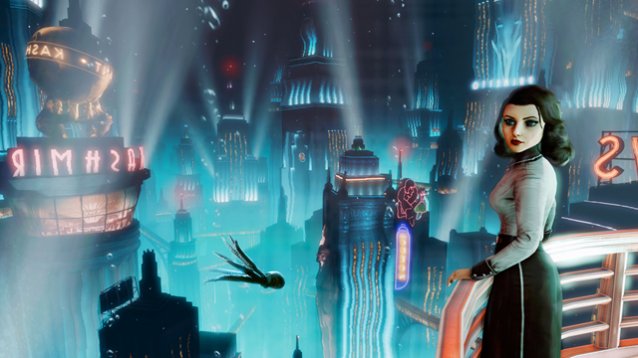
In a panel at this year’s Game Developers Conference, BioShock’s Ken Levine discussed his aspiring ideas on how to break the mold of linear narratives in game design. His goal? To create a system that allows for infinite replays. In other words, he wants to create a circle that remains unbroken…. without falling into the linear redundancy that he graciously admits games like BioShock often rely on.
Levine claims that linear narratives can be problematic in that they can take away one of the largest characteristics video games hold over other mediums of art and entertainment—the ability to be replayed for different experiences. He explained that, “Games are about player action, not authorial action,” emphasizing that often times the linearity in games create experiences that rob the player of agency. This illusion of player choice even exists in games that have multiple endings, because eventually “…you’re going to have the same experience as one of your friends.”
The fix, Levine proposed, starts with re-approaching AI design. Gamers and designers often have this expectation that AI needs to be as realistic as possible, an expectation that he argued establishes paralysis in designers—an ambition that says, “if this can’t be done perfectly, just don’t do it.” Instead of following these unrealistic design expectations, what we should do is “model a set of believable and impactful moments” with these characters rather than trying to model everything; in doing this we create memorable characters that trigger off player action
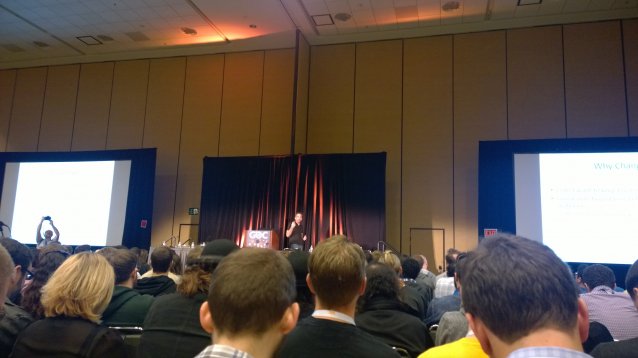
This concept is expanded in a lovely display or orcs and elves, exploring the idea of “stars” and “passions.” Star characters are AIs designed with passions, which are what a star AI cares about relative to the player. For example, in the setting of a small town with 50 AI citizens, five of those would be stars who care and are influenced by certain things, where the rest of the citizens are “drones” and follow the behavior of how the star AIs are influenced.
Levine focused on the example of Frank the Orc, a star AI who absolutely despises elves (one of his passions, or what he cares about relative to the player). The player can impact Frank’s actions by either acting kindly towards the elven factions or killing them. If the player kills the elves, Frank will like you more, increasing his “Threshold” (a small bar that shows Frank’s level of friendliness towards you) and opening more plot points in game. Maybe Frank will invite you to eat with the Orc king, perhaps he will allow you a discount in his shop, or even follow you around and help you on your adventures. Conversely, if you help elves, Frank may take buffs away from you, take away access to his shop completely, or even attack you. This system becomes even more complex when the lives of stars intersect. What if the player wants to marry an elf but also befriend an orc? These complexities only grow when the star AIs have multiple micro-passions (e.g. hating elves, worshipping old gods, falling in love). In changing the thresholds of each star AI, the player can unlock a multitude of stories, possibilities, and outcomes.
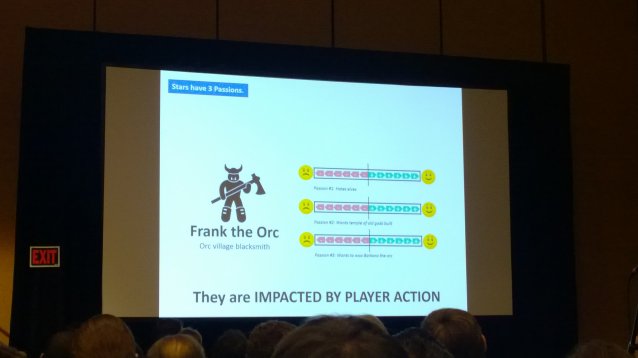

This is what Levine called “zero-sum”—star AI conflict—where the player realizes that it is impossible to make everyone happy. If you help the orcs, the elves dislike you. If Frank the orc likes the old gods and you worship the new ones, Frank dislikes you. “Frank cares about hating elves, but this is really how he feels about you in relation to hating elves.” Everything comes back to the player and how they are creating the story around their own actions. These actions also lead to dramatic events, which based on faction and star AI alignment can summon events and characters that are unaligned to any particular faction, such as a massive dragon that enjoys destruction, or another entity (he uses a silver dragon) that enjoys productivity and construction.
While Levine’s talk remained surface level, it’s important to note that this systematic concept is still in the midst of being conceived. Levine stated that these “Narrative legos,” as the talk is titled, “are a back of the napkin thought experiment.” He presents these ideas openly as building blocks that can encourage reply through true agency and briefly touches on how even co-op multiplayer can assist in adding even more new loops to the table. As the ideas move from napkin to game, it will be fascinating to how this influences the future of narrative design in games.
Katy Goodman is a freelance writer and graduate student. When she isn’t busy training birds of prey, horses, or freshman composition students, she can be found hiking or playing video games. Probably video games. She also really likes grilled cheese sandwiches. Follow her on Twitter @InvizzyB or on her blog, Pixel Hearts.




 H1Z1 Guide: How to Get Started
H1Z1 Guide: How to Get Started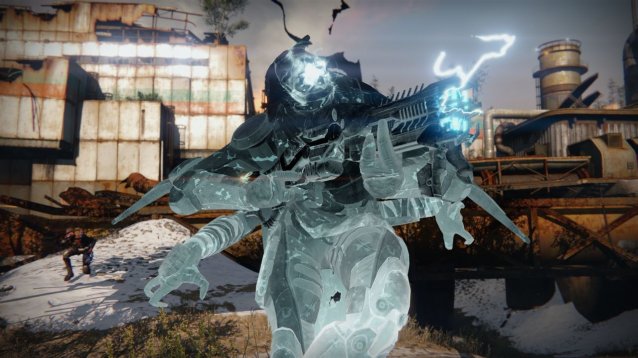 Destiny: The Taken King Guide - Where to find Taken Champions in The Taken War: Earth
Destiny: The Taken King Guide - Where to find Taken Champions in The Taken War: Earth Far Cry 4 Walkthrough
Far Cry 4 Walkthrough Warlock: Master of the Arcane — Just One More Turn
Warlock: Master of the Arcane — Just One More Turn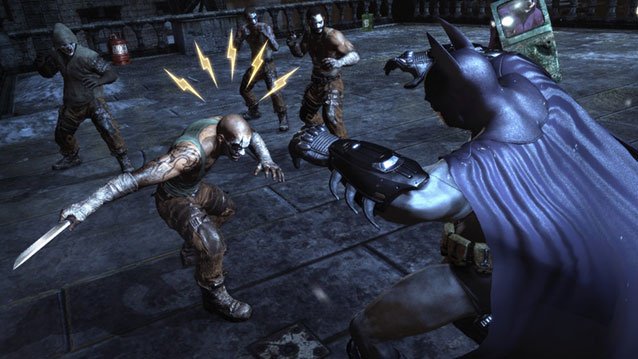 Top 20 Most Annoying Video Game Enemies
Top 20 Most Annoying Video Game Enemies